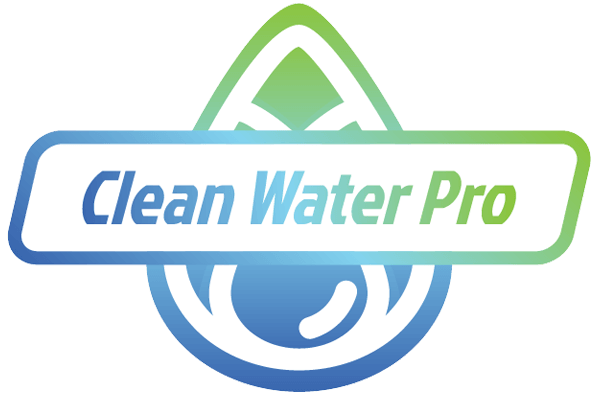Dugout ponds, storm retention ponds, fishery lakes, wastewater lagoons, and natural swimming ponds can face challenges like poor water quality, stagnation, and the depletion of oxygen levels, which can harm aquatic life and compromise their ecological balance. Fortunately, a powerful and sustainable solution can significantly improve these water bodies’ health and vitality: water aeration.
In this blog, we will explore the concept of water aeration and its wide-ranging benefits for these diverse aquatic environments.
Understanding Water Aeration
Water aeration is a process that involves adding oxygen to the water to enhance its oxygen levels and improve overall water quality. Water aeration augments the natural process of oxygen replacement by injecting air into the dugout’s deepest part, producing a non-turbulent mixing action, lifting the oxygen-depleted water from the bottom to the top to circulate with the oxygenated water.
Various aeration systems can increase dissolved oxygen levels; fine-bubble water aeration is typically the most effective and cost-efficient. By increasing dissolved oxygen levels, aeration promotes aerobic conditions, which are crucial for sustaining aquatic life and supporting healthy ecosystems.
Water Aeration Benefits
Reduce Nutrient Accumulation
Runoff contains excess nutrients, leading to eutrophication and harmful algal blooms. Eutrophication is when water becomes overly enriched with nutrients, typically phosphorus and nitrogen. This can result in the rapid growth of harmful algae and aquatic plants. Aeration helps to counteract this process.
Using aeration aids in controlling nutrient levels by promoting aerobic bacteria because they thrive in the presence of oxygen. Aerobic bacteria are critical in breaking down excess nutrients like phosphorus and nitrogen. By enhancing their activity, aeration accelerates the decomposition of organic material, reducing nutrient levels in the water, preventing eutrophication, and mitigating the risk of waterbody degradation.
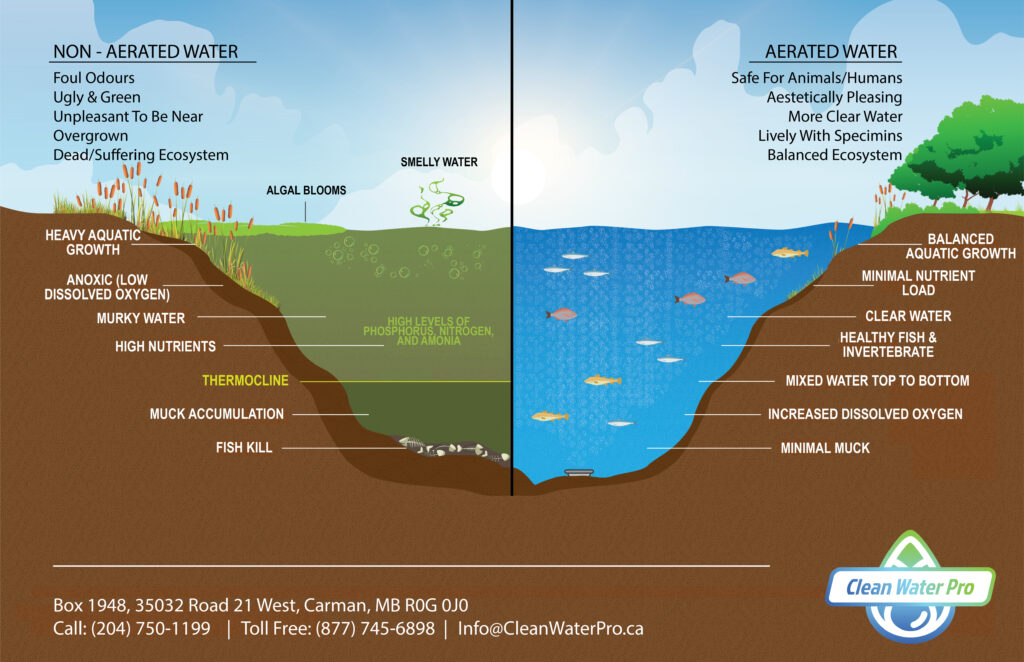
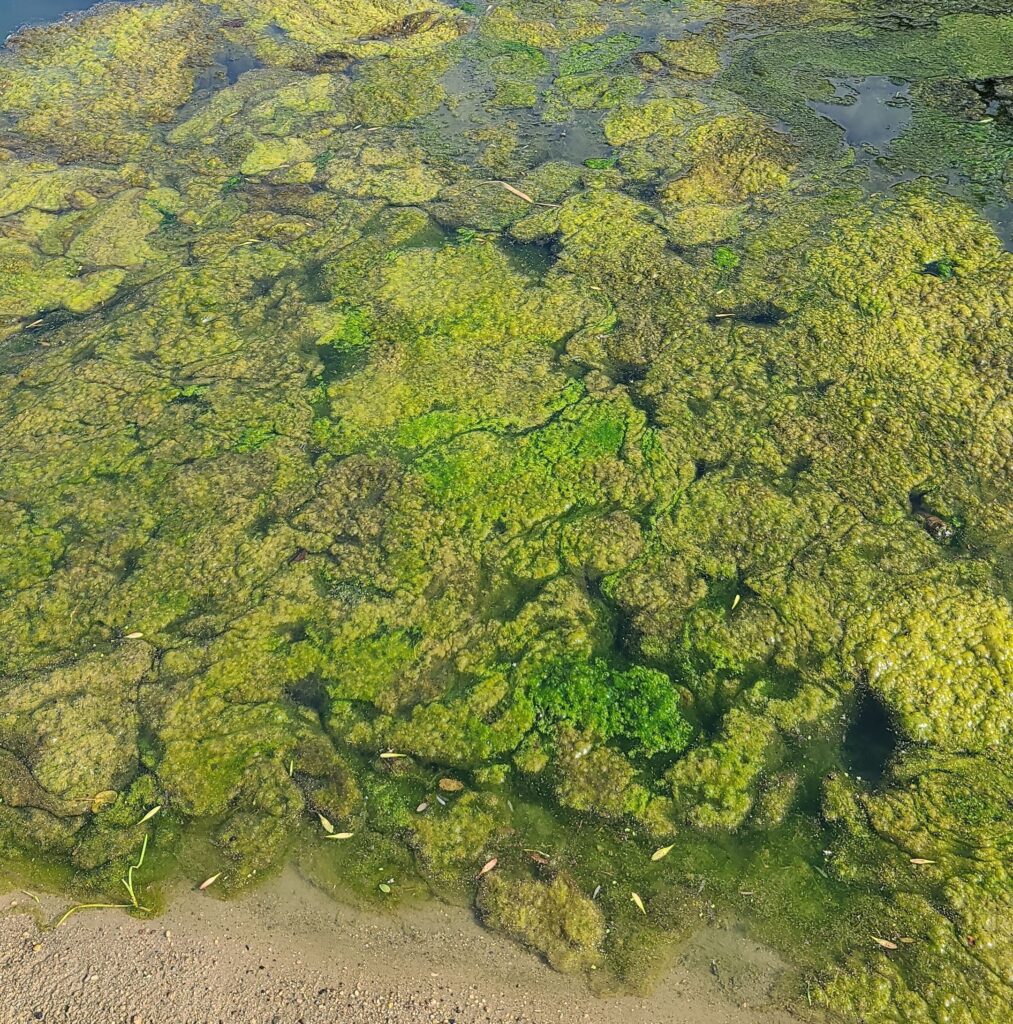
Weed & Algae Control
Algae and weeds can cover the water’s surface, limiting sunlight penetration and depleting oxygen during decomposition, further exacerbating water quality issues, and can even lead to harmful algal blooms. As nutrient levels decrease due to aeration, the growth of nuisance algae and aquatic weeds is inhibited.
Aeration helps maintain a balanced aquatic ecosystem by controlling the excessive proliferation of these organisms.
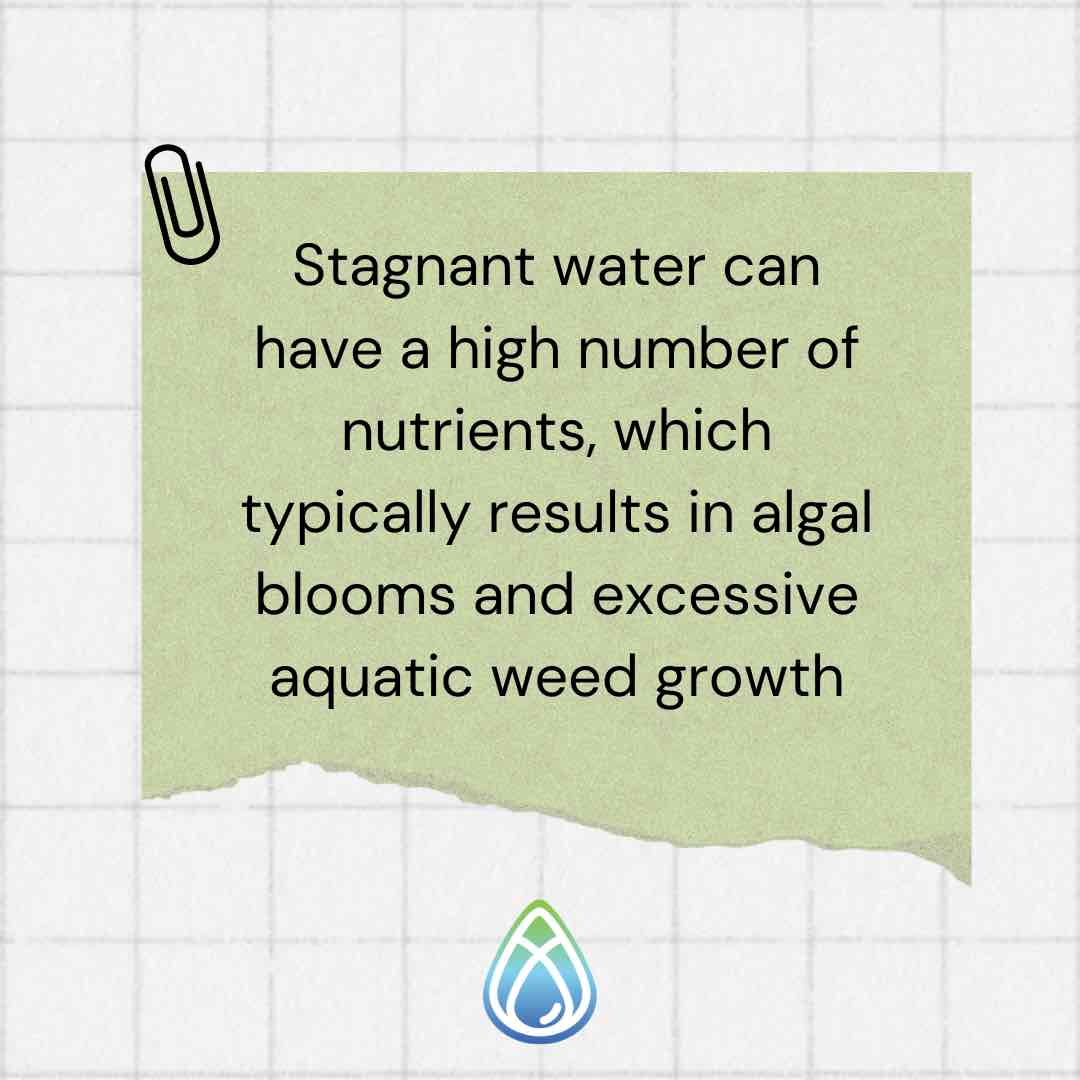
Eliminate Foul-Odours
Foul odours are a sign that a waterbody has become stagnant. One of the primary benefits of water aeration is its ability to improve water quality and eliminate the poor smell. Adequate oxygen levels help prevent the accumulation of gases like hydrogen sulphide and methane, which smell like rotten eggs and are common in stagnant water.
By reducing these harmful gases, aeration significantly enhances water clarity and reduces unpleasant odours in storm retention ponds, dugout ponds, and wastewater lagoons.
Prevent Fish Kills
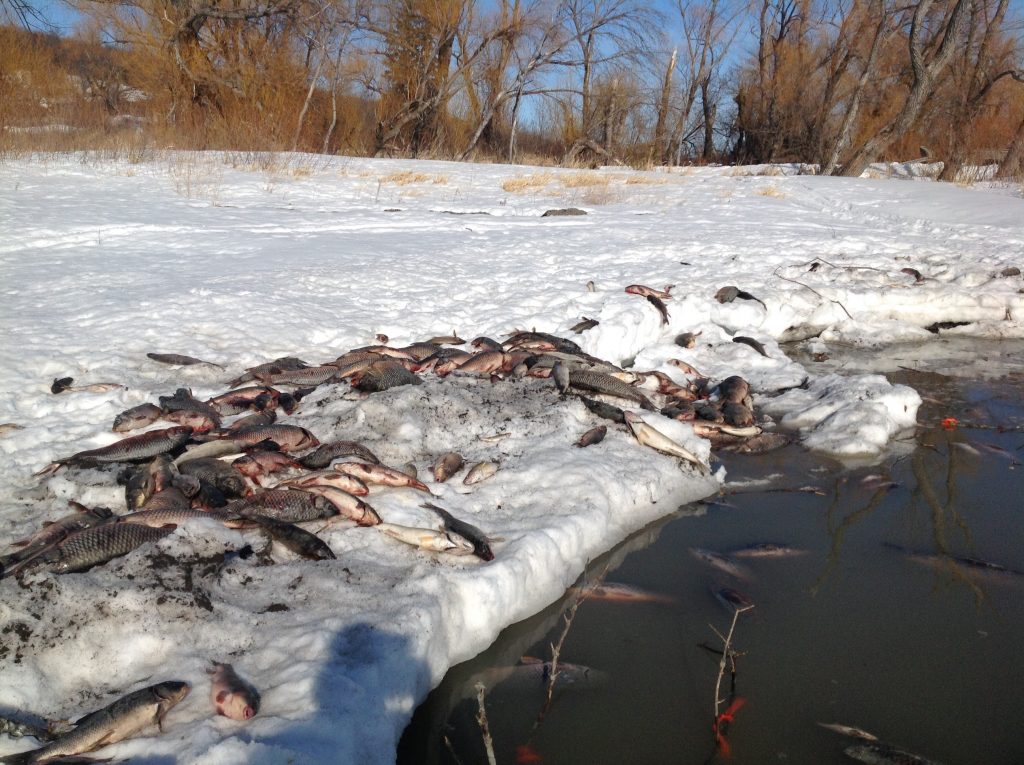
When a pond or lake freezes over in the winter, the ice acts as a barrier, preventing oxygen exchange between the air and the water. Organic matter accumulated in the pond throughout the year continues to decompose, releasing gases trapped beneath the ice. This can lead to a significant reduction in dissolved oxygen levels in the water.
Insufficient oxygen and accumulating gases under the ice can lead to winter fish kills. Water aeration helps prevent fish kills during these critical times by providing a constant oxygen supply. This ensures an adequate supply of oxygen for fish and other aquatic organisms. Aeration systems also prevent complete ice cover or create areas of open water in the pond. These open areas serve as oxygen exchange points, allowing fish to access the vital oxygen they need. Fish can migrate to these ice-free zones to maintain oxygen-rich conditions.
Alleviates Thermal Stratification
Thermal stratification occurs when there is a distinct layer between warmer mixed water at the top and cooler water at the bottom of a water body. The thermocline marks the boundary between the warm, oxygenated surface layer and the cooler, less-oxygenated deeper layer.
Thermal stratification can impact oxygen distribution in a pond, potentially leading to oxygen depletion at the bottom, especially if the pond is shallow or has limited water circulation. This can be problematic for fish and other aquatic life, as the lower layers may become oxygen-poor, potentially leading to poor water quality and even fish kills. Thermal stratification is influenced by factors such as pond size, depth, and the surrounding environment. The upper layer becomes warmer during hot weather, while the lower layer remains cooler.
Using a water aeration system introduces oxygen throughout the water column. This ensures that oxygen is distributed evenly, regardless of the depth. Fish and other aquatic organisms need access to oxygen at all water levels, as it supports their respiration and metabolism.
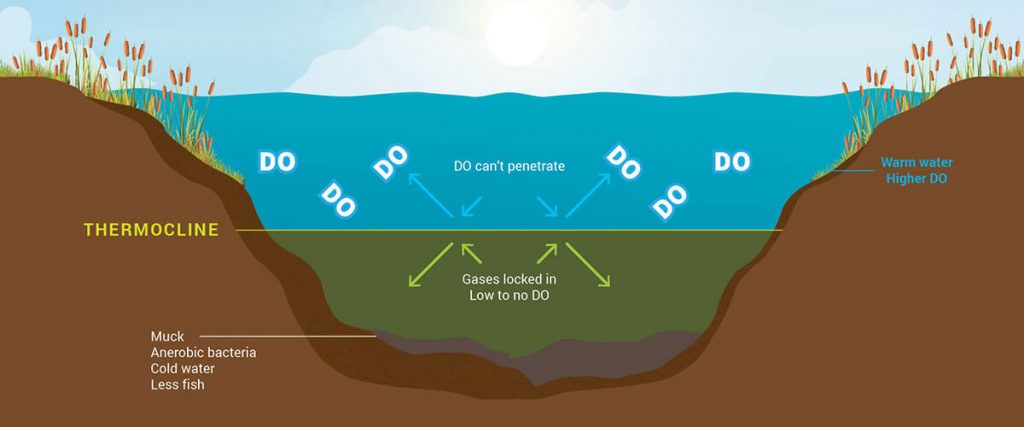
Promote Aquatic Life
Healthy dissolved oxygen levels are essential for the survival of fish, beneficial bacteria, and other aquatic organisms. Water aeration ensures a thriving fish population and supports a balanced food chain in fishery lakes and ponds. Fish and other organisms can access suitable temperature and oxygen levels throughout the water column, promoting their health and overall ecosystem stability.
Moreover, aeration fosters the growth of beneficial aerobic bacteria that break down organic matter, reducing the risk of algae blooms and water quality issues.
Natural Swimming Ponds
Natural swimming ponds should have aeration as it reduces algae growth and keeps the water clean and clear. Clear water enhances the pond’s aesthetic value and allows swimmers to see underwater, reducing the risk of accidents. Proper aeration also helps reduce the concentration of harmful bacteria and pathogens in the water.
It’s safe to say that people prefer to swim in clean and healthy water. This makes for an enjoyable swimming experience, free from harmful bacteria and contaminants. Read more about why you should consider building a natural swimming pond here.
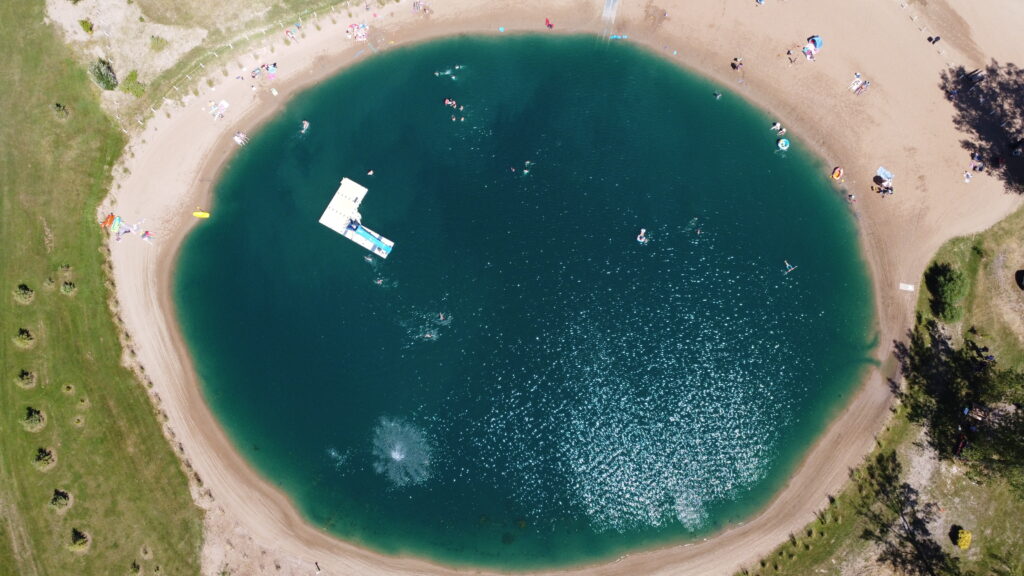
To Summarize:
Water aeration is a powerful and eco-friendly solution to enhance the health and sustainability of diverse waterbodies, including dugout ponds, storm retention ponds, fishery lakes, wastewater lagoons, and natural swimming ponds.
By promoting higher oxygen levels and improving water quality, aeration fosters a thriving aquatic ecosystem and benefits the surrounding environment. Whether for ecological preservation, fishery management, or recreational purposes, water aeration is a valuable tool in maintaining the balance and vitality of our precious water resources.
